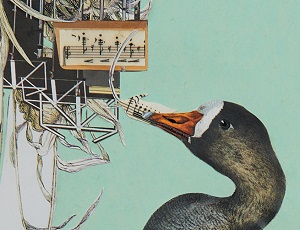
The exhibition of manuscripts organized as an accompanying event of the 27th Ludwig van Beethoven Easter Festival will present autograph scores, pieces of correspondence, final copies of symphonic works as well as the composer's working sketches.
Ludwig van Beethoven's activity as a composer constituted one of the revolutionary stages in the history of music as it laid out new directions for creative exploration and inspired the next generations of musicians. Over the last two centuries, as the Western European musical tradition gradually came to dominate the mainstream of the global musical culture, and the musical language it cultivated won a universal significance, Beethoven, the central representative of the Western musical culture, became one of its leading symbolic figures. His compositional legacy continues to thrill multitudes of music lovers, making it a vital, living element of contemporary musical culture and concert life. Having retained its artistic relevance to this day, it is a permanent, almost obligatory element of the repertoires of orchestras, chamber ensembles, and virtuoso soloists world wide, still arousing genuine interest of audiences.
This year's exhibition of musical manuscripts exhibition features Ludwig van Beethoven’s autograph scores and pieces of correspondence preserved in the collection of the former Prussian State Library in Berlin, currently stored in the Jagiellonian Library, including final copies of his major symphonic works: Symphony No. 7 and the third movement of Symphony No. 8. Chamber compositions are abundantly represented, especially string quartets from the last years of the composer's life, considered to be an exceptionally individual and visionary chapter in the oeuvre of the Master from Bonn.
Particularly fascinating are Beethoven’s sketchbooks, which have survived to this day and provide researchers, as well as to some extent lovers of Beethoven’s music, with a unique insight into the composer’s workshop, creative process, and intimate relationship with his compositions. A discerning eye familiar with the work of the great German can read from them the detailed chronology of his compositional process, the musical works and ideas that were abandoned or reworked later, and their subsequent transformations. The best known is the so-called 'Eroica sketchbook’, which contains working notations for a number of pieces from 1803-1804, including very early drafts of themes from Symphonies No. 5 and No. 6, completed later in 1808. Alongside the musical manuscripts, Beethoven’s letters to his nephew, Karl van Beethoven, are also on display.
In order to highlight the essential role of the works of the Master from Bonn in contemporary repertoire and concert life, the exhibition has been complemented with selected Krakow concert posters from the collections of the JL Music Section advertising performances of Beethoven’s compositions by players from all over the world.
Author: Michał Lewicki

